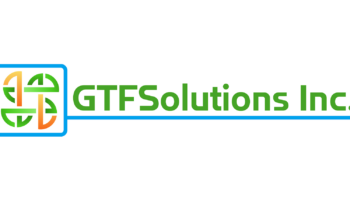
For every important task for every important objective, corporation, roles, partnerships, and cooperation are crucial to its accomplishment. Strengthening compliance efforts is no different; the paradigm of strengthening complaints and complaints requires partnerships or effective upscales and development, ranging from the implementation of compliance policies to whistle-blowing to reporting suspicious activities.
This will mostly involve public-private partnerships as public agencies or regulatory or oversight bodies are primary entities for enforcing complaints. Private entities can provide support, which may be informative, educative, or cooperative or whether it has to do with innovations. The strengthening of AML compliance efforts goes way beyond government interventions, although governmental entities may set the framework for compliance efforts, such the Financial Action Task Force of the UK. With intricate partnerships fostered and developed, defences are bolstered against money laundering and serve as a formed beacon of transparency and integrity within the vast financial ecosystem. This article highlights and discusses the roles multifaceted partnerships play in strengthening AML compliance efforts, evaluating and assessing just how collaboration at different levels is the key to effectively combating financial crime in the backdrop of today’s new digital world.
What Do AML Compliance Efforts Entail?
Anti-money laundering (AML) compliance efforts entail a variety of measures and procedures that financial institutions, businesses, and regulatory authorities put in place to detect, prevent, and report activities related to money laundering and financial crimes. These efforts are crucial for maintaining the integrity of the financial system and preventing illicit funds from entering the legitimate economy. The key components of AML compliance efforts include:
Customer Due Diligence
Customer Due Diligence (CDD) involves the process through which banks and other financial institutions validate their customers’ identities and the nature of their business. This procedure is required by law and assists the organisation in understanding the money laundering risks it faces. It is notable to know that CDD is an ongoing process.
Know Your Customer Procedures
Know Your Customer (KYC procedures involve a set of actions that involve identifying and verifying the identification of your consumers. KYC is a continuous process that lasts the duration of the business-customer relationship.
Suspicious Activity Monitoring
Suspicious activity monitoring entails continuous monitoring of customer transactions for any irregular or suspicious activities. It establishes thresholds and rules to flag potentially suspicious transactions. Investigating and reporting suspicious activities as required are essential parts of the process.
Transaction Monitoring
Transaction monitoring literally entails tracking financial transactions to identify patterns or anomalies that may be related to money laundering. It involves utilising technology and analytics to analyse large volumes of data in real-time, establishing protocols for reporting unusual or high-risk transactions and thorough record-keeping and documentation.
Employee Training and Awareness
This is a core feature of an organisation with a thriving compliance culture. It involves providing training to employees on AML regulations, policies, and procedures, as well as raising awareness among employees to recognise and report suspicious activities.
Risk Assessment
This involves conducting risk assessments to identify and prioritise AML risks specific to the institution’s operations. It also involves developing risk-based AML programs that can address identified risks as well as developing risk-based AML programs tailored to address specific risks.
Reporting to Regulatory Authorities
This involves filling suspicious activity reports (SARs) with the appropriate authorities when potential money laundering activities are detected. Organisations also need to comply with reporting requirements specific to the jurisdiction and regulatory bodies.
Internal Controls and Governance
This involves the activities of governmental and organisational entities directed towards implementing internal controls and governance structures to ensure compliance with AML regulations. Internally, AML officers can be appointed to be responsible for overseeing AML programs.
Sanctions Screening
Sanctions screening involves regularly screening customers and transactions against government sanctions lists and watchlists. Other related activities include regularly screening customers and transactions against government sanctions lists and watchlists and blocking or reporting any matches with sanctioned individuals or entities.
Whistleblower Programs
Whistle-blowing programs are also a strategic part of AML efforts; they involve establishing mechanisms for employees and stakeholders to report suspicions of money laundering or non-compliance confidentially. It also ensures legal protections for whistleblowers.
International Cooperation
This involves collaborating with international organisations, law enforcement agencies, and other financial entities to share information and combat cross-border money laundering.
How Partnerships Can Help Strengthen AML Compliance Efforts
Partnerships can help to boost Anti-Money Laundering (AML) compliance efforts by combining the strengths and resources of many parties. Here are some ways that collaboration might help with more successful AML compliance.
Partnerships are an essential component of a comprehensive approach to AML compliance. They let stakeholders from many industries pool their expertise, resources, and efforts in order to better detect, prevent, and combat money laundering. In an increasingly complex and linked world, public and private institutions might collaborate to build a more resilient defence against financial fraud.
1. Collaboration on Intelligence and Information Sharing
Collaborations between financial institutions, regulatory entities, and law enforcement agencies enable the exchange of essential information and intelligence about money laundering activities. This collaborative approach can aid in the identification of complicated money laundering schemes as well as the tracking of questionable transactions across numerous institutions and jurisdictions.
2. Global Coordination
Money laundering is frequently a multinational crime. Therefore, international collaboration is vital. Collaboration among governments and international organisations makes it easier to monitor illicit payments across borders. It also ensures that AML policies are globally consistent and effective.
3. Risk Evaluation and Mitigation
AML risks can be collectively assessed through public-private partnerships. With their industry-specific knowledge, financial institutions can collaborate with regulators to identify potential risks and vulnerabilities. They can effectively manage these hazards if they work together. A good example is during loan applications where private financial institutions collaborate with the government to verify customer data and perform risk assessment before approving a loan.
4. Education and Training
Partnerships can be employed to develop and implement AML training programmes. Financial institutions can share best practices and give training materials, while regulatory agencies can provide regulatory compliance assistance. This guarantees that industry experts are well-informed and able to deal with growing money laundering concerns.
5. Advances in Technology and Innovation
Collaboration between financial institutions and technology firms can result in the development of enhanced anti-money laundering technologies and solutions. This involves employing artificial intelligence and machine learning algorithms to spot suspect patterns and transactions in real time, hence increasing the efficacy of AML initiatives. An example is Regtech solutions such as Youverify.
6. Whistleblowers Programmes and Paradigms
Public-private partnerships can help to create a secure atmosphere in which whistleblowers can disclose suspected activity. Regulatory bodies can set up procedures for confidential reporting, and financial institutions can help by fostering a reporting culture inside their organisations.
7. Enhancing Compliance Policies
Compliance necessitates strong policies and procedures to detect and prevent money laundering. Partnerships between the public and commercial sectors allow for the sharing of expertise and resources. Regulatory agencies can collaborate with financial institutions to create and update compliance regulations that are in line with current industry trends and money laundering strategies.
Bottom Line
Partnerships and cooperation are critical in the battle against money laundering. Collaborations between public and commercial institutions provide a formidable barrier against financial crime. They allow for the establishment of effective compliance procedures, the sharing of information, the promotion of innovation, and the enhancement of global cooperation. As we traverse the complexity of the modern digital world, these collaborations continue to be the backbone of AML efforts, guaranteeing a more transparent and safe financial ecosystem for everybody.



